Text by Martyn Riley
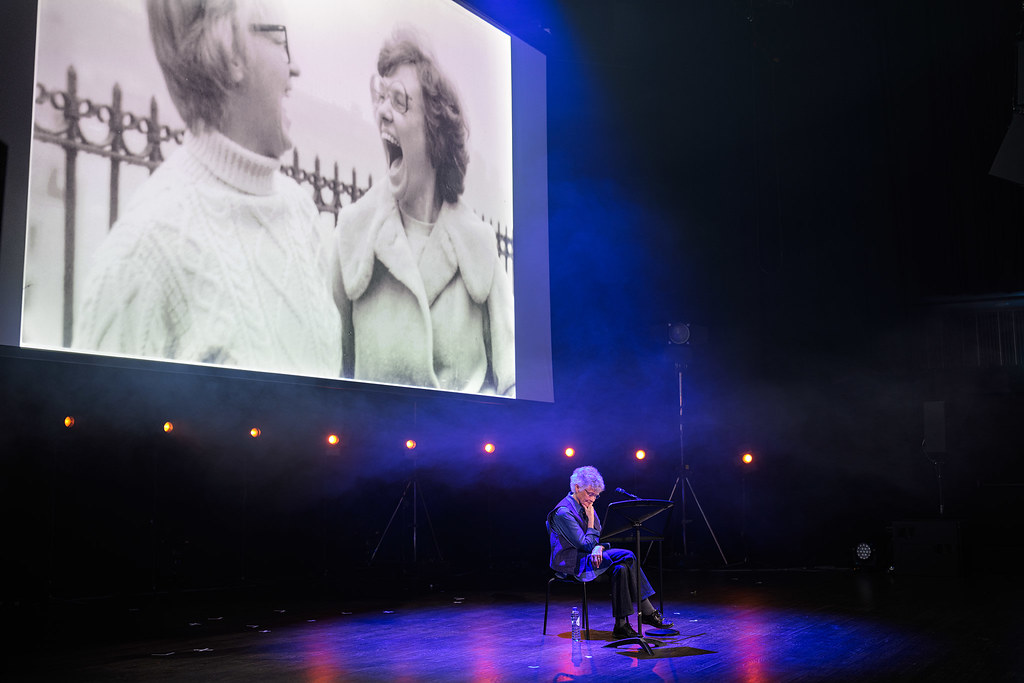
Rewire 2024 and Proximity Music weft and warped together throughout its four-day duration; much like observing the constant near-chaos of The Hague’s cycle lanes, tramways, and pedestrian ways inter-mingling, which Rewire appeared to mimic. Like these interestingly fraught journeys, I made my path, a personalised festival within a festival.
2024’s Rewire once again had a partner in iii introducing Proximity Music’ and sub-titled States of Fragility, an apt title which not only encompassed each of the nine pieces contextually but also felt quite apt with what Annea Lockwood called the ‘vortex of normality’, referencing current global situations whilst in discussion with artist and writer Salome Voegelin. An intimate talk touching on Lockwood’s practice and standpoints. Such as her lifetime study of singular sounds, the reduction in the number of the planet’s insects, and how collaborations are ignited and developed. Of course, the short-notice cancellation of her, now iconic, Piano Burning was discussed at length. A piece born in the late sixties, hampered by the risk assessments in the twenties. I, like many, felt lucky to be present to hear Annea’s views and witness a pure and mutual respect contained in the room.
For Proximity Music, each of the Yannick Gülder curated installations for iii was situated in various venues and locations. Possessing a natural and dynamic bond that connected them. Witnessing their sonic, physical and emotive reach, these associations only increased, stimulating secondary viewings for many.
I was mesmerised by Jeanine Verloop’s CHIME exhibit, which featured delicate, fluid movements and an intriguing sense of disorder. Verloop utilised thin, heat-treated borosilicate glass to craft a series of skeletal sculptures that moved in unpredictable ways. Each piece emitted unique sounds based on resonant frequencies and occasionally shed fragments to the floor. The exhibit’s setting at Billytown, with its expansive windows, added to the immersive experience of exploring the suspended and upright coils of vibrating glass.
Performing All Around, percussionist Will Guthrie and choreographer and dancer Mette Ingvartsen created whirling agitated movements and noise, with a single point of light controlled by Mette, gradually changing hues and connecting the Australian drummer’s syncopated and shifting rhythms to her often hectic and swirling movements. Highlighting sections of the all-sided audience meant the viewers had a part to play. Its crescendo created primal screams from the dancer, which transferred to many entranced people in the audience.
Marco Fusinato‘s artwork, DESASTRES, is an ongoing project that continues to evolve. A social commentary with monochrome stills triggered by Marcos’ playing of distortions and feedback, induced, and shaped through pedals on his chrome-faced guitar, pumping out of two quad-stacked amps. Performed for eight hours per day, it aimed to highlight social tensions where cultural divisions are offset by institutions and the establishment. A fact not lost when entering the historical building housing the gallery; the crashing slabs of noise were immediately apparent, with gallery staff politely not fazed by huge vibrations amidst the more traditional oil on canvases.
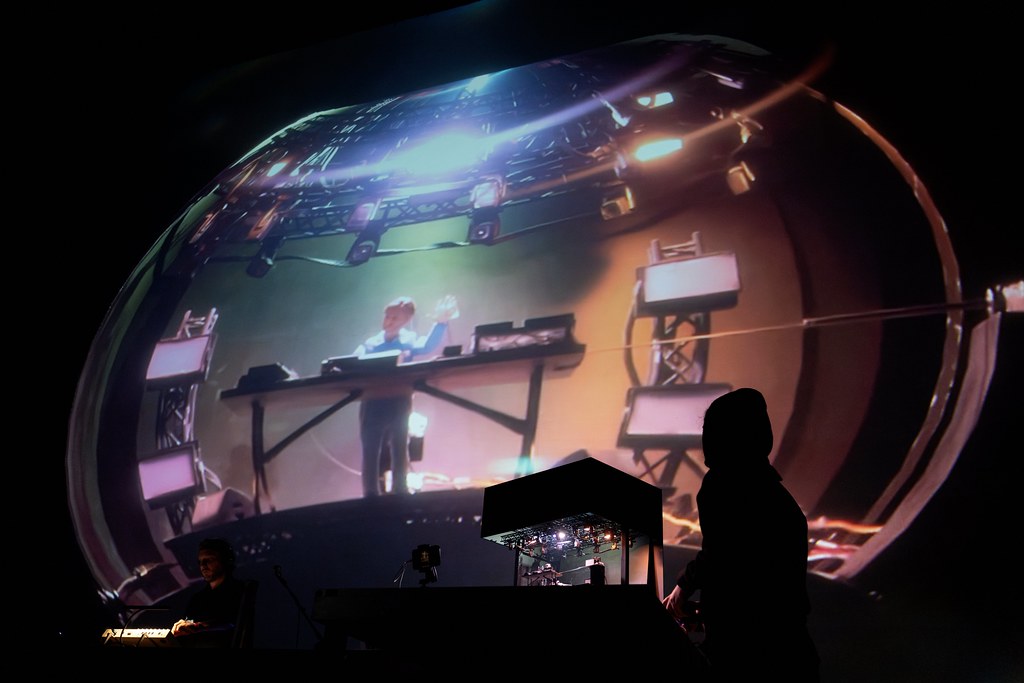
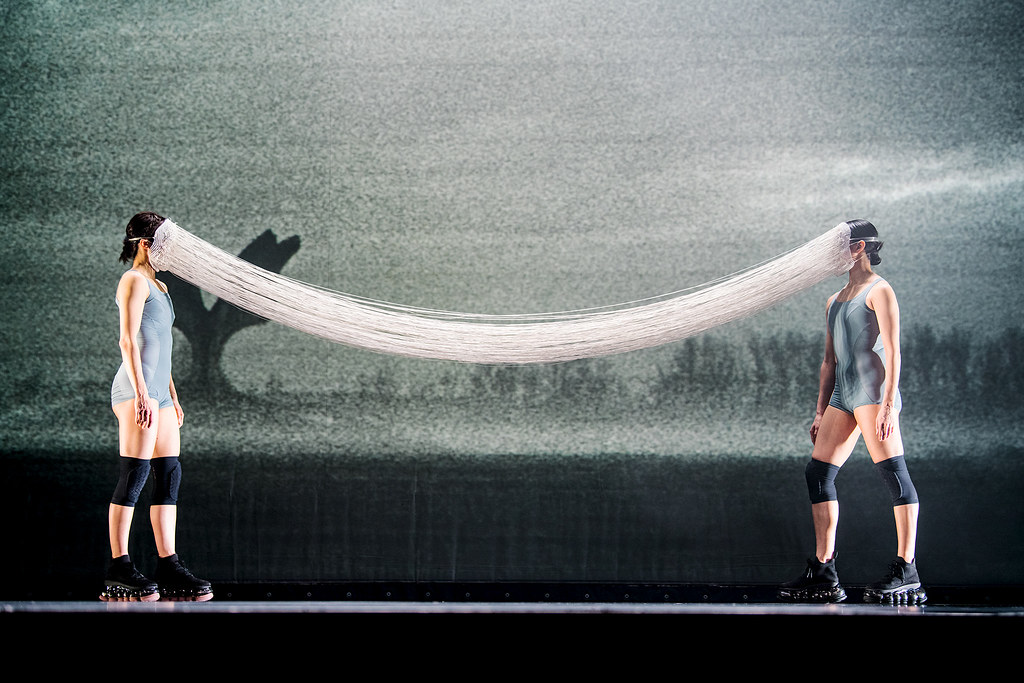
Another piece for Proximity Music, UNDER BOOM by Louis Braddock Clarke, had my hypnotised attention several times. It was an experience of constant kicks of rhythms and flashing visual combinations of sonic ecologies, with cave-like interiors and monochrome flashes to red and green. It wrong-footed me many times with two angled and overhanging screens, which hit the viewer with imposing vibrational visual energies and anthropogenic beats. This constantly alternating and almost unnerving hallucinatory throughout its duration had me sitting on the floor without realising.
Entrancing in a more durational and slow-shifting medium of visuals and movement was the screening of the late Johann Johannsson’s First & Last Men, performed live with its original co-composer Yair Elazar Glotman, and narrated by the distinctive voice of Tilda Swinton. A new additional response was from Neon Dance, inferring the shape-shifting of thirteen stages of humanity in future times by original movements and minimal stage accoutrements, apart from stunningly designed linked face masks. I marvelled at the linking of these bonded adaptations, from a 90-year-old sci-fi novel book to film and music to choreographed movements. Creating connections to our potential communications with unseen futures.
Jenny Hval is a unique performer in many ways. Performing on a stripped-down stage area with transparent communications by displaying sketches and PDFs of production notes and stage specifications. Evolving a mini-seminar with the audience and involving us with delicately nuanced smells on ripped paper pieces passed along to all in the stalls, which linked directly to mystical stage-craft elements. In the meantime, she played her avant-pop music, crafted sparsely and ingeniously perfect. Her storytelling and opinionated interjections entering the liminal spaces and beyond. Not many artists can achieve this simple yet complex unexpected craft while still entertaining with challenging musical narratives like Hval flourishes in.
Autechre created a (near) blacked-out church interior where neighbour’s silhouettes were just discernible. At the lights-up moment, we realised just how many people were in to witness this, as we all squashed, politely, together into a minimally sized personal space. I was suitably impressed by how many people could dance in such a small footprint without striking others. Autechre’s sonics were certainly amongst the best I have heard from Messrs. Brown & Booth in the many years. They glistened and scratched, almost taunted, and intrinsically excelled in what they do best, implementing loops of new impossible textures and classic half-recalled samples with swells from their ever-expanding portfolio of sounds. It even felt quite jazz-infused for a short period.
This leads me naturally to the Australian cult band of Chris Abrahams, Tony Buck, and Lloyd Swanton, the motif-driven long-form trio, The Necks. Certainly, the most sizable stage (and lights) I have seen them perform on, as it’s always been the intimate surroundings of the Jazz Café or Café OTO in London; however, this mattered not; it felt just the same. Each member seemingly extracted a simple musical movement from their instrument, stretching it to the maximum as companions followed with parallel sonic interpretations; Bucks’s unconventional percussive tools armed with a mysterious mix of rhythmic utensils rasping the snare.
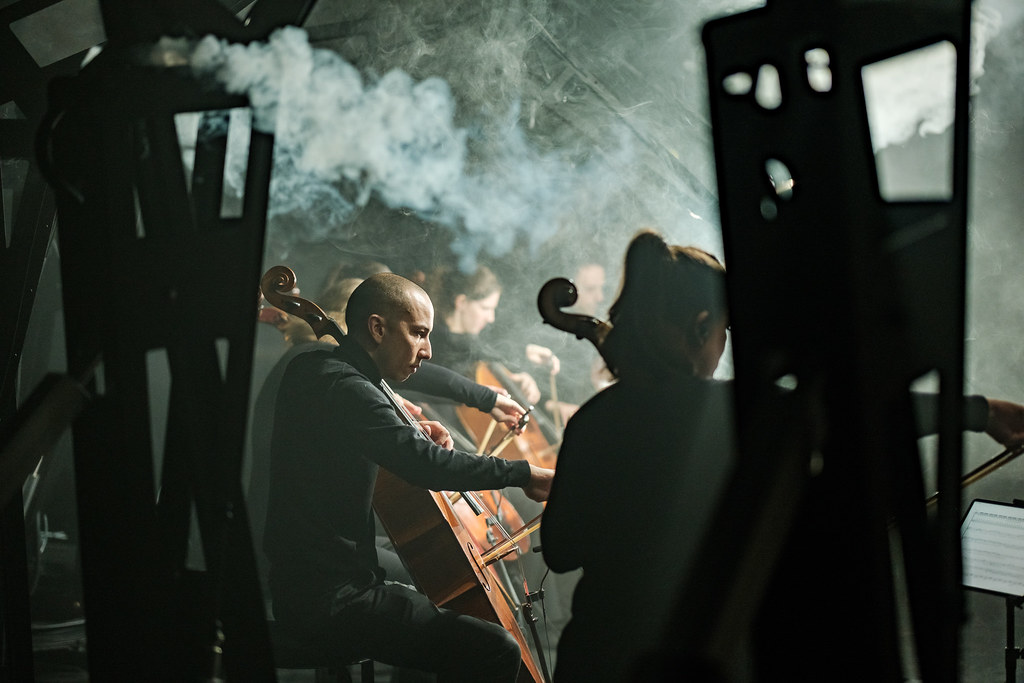
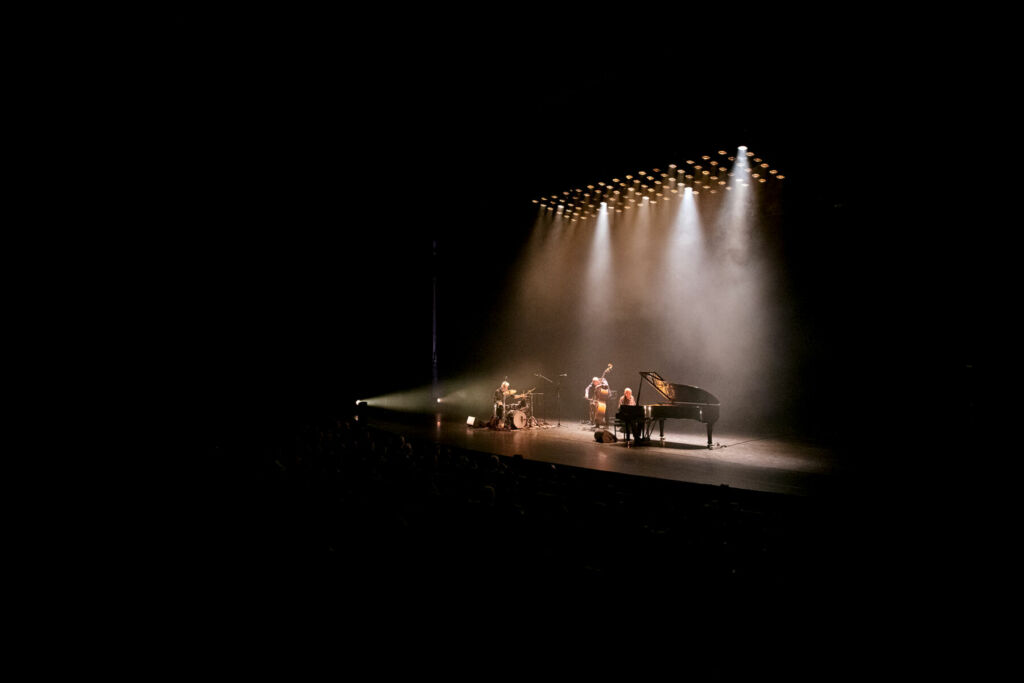
The unique Cocon, created by Nick Verstand with the Cello Octet Amsterdam, consisted of the eight cellists ominously shadowed by huge robotic single-armed structures. It was the closeness between human and machine that created an unnerving and quite surreal intimacy, with a touch of anxiety for the cellist’s well-being. My initial concern was that these hydraulic metal mono-arms and their potential ‘bells and whistles’ could overshadow the experience of the composed pieces commissioned for this series of concerts as they tour through Europe. It included pieces by KMRU, Kari Lis Coverdale, and Caterina Barbieri, which all stunned in their dynamic breadth and harmony. With slow mechanical movements, which as time went on, included lights, mist and lasers, extenuating the compositions without grandstanding.
The superb finale of Oneohtrix Point Never had something of the non-linear experiential timestamp this festival possesses, which is its multi-format of schedule information, and once you find your path, days and times disappear. This set was not a journey in the traditional sense of a set. This is all about the forward & back, vignettes and snippets of samples and synthesised characters, slabs of noise, entrancing de-tuned midi-leads and auto-tuned live vocals by Daniel Lopatin.
(Re)opening my ears by ignoring the norm of western scales that, via my own schedule of choices, were oft dominated by string instruments. A visual highlight was like something out of a classic children’s stop-motion show crossed with Being John Malkovich on acid. A minute Lopatin being crafted and moved in front of a laptop as the background in a box and filmed on an iPhone, transferred directly to the huge screen, stunningly created by the French artist Freeka Tet. There were moments when this AV ride tilted my whole brain and I felt I was truly inside this cardboard box on stage.
It would be impossible to mention all my experiences at this hugely enticing, intense and entertaining Rewire 2024. However, in summary, the artists and performers I experienced, from what I could garner, truly found their curatorial friend in The Hague. Whether hidden from view, or the light, harnessing alternate technology, or enhancing their acoustics within their spatial locations, communicating with it, or just simply homing in on a single motif and seeing where it would go.





